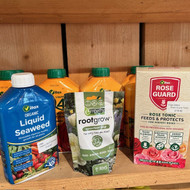Whilst some roses can be considered ‘low maintenance’ plants (the Flower Carpet series of modern shrub roses, for example), many do need a certain level of care and attention in order for them to flourish and fill the garden with colour and perfume. In particular, roses require high levels of certain nutrients, and a good soil structure with plenty of organic matter for moisture retention.
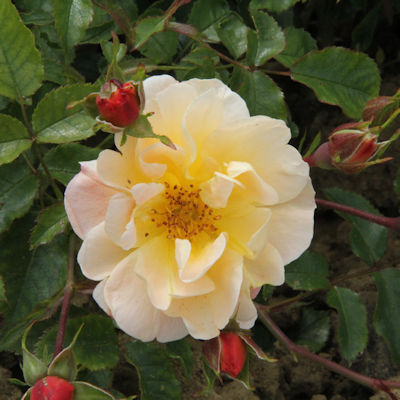
Soil preparation:
Good soil preparation, whether planting bare root or potted roses out in the border, or potting on container grown roses, is essential.
Planting roses in a border: Prepare the soil, ideally some weeks in advance, by digging the area thoroughly and incorporating plenty of organic matter into the top 30cm of soil (well-rotted manure, leaf mould or garden compost are ideal). Add a small handful of bonemeal into the soil around the roots, as this encourages good root establishment. Roses enjoy growing in nutrient-rich clay soils, so good preparation is even more important in thin, dry, or chalky sites.
Roses in containers: Ideally use a 50/50 mix of John Innes No. 3 and a multipurpose compost. This is the ideal growing medium for roses, retaining moisture and not drying out too quickly. On first potting up, add a small amount of bonemeal to encourage good root growth.
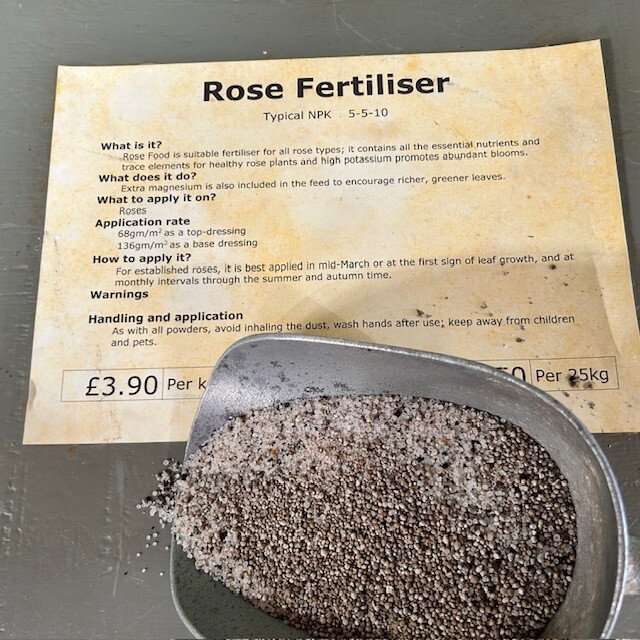
Feeding:
Roses are heavy feeders. We recommend using a slow release Rose Feed, twice per year. Apply once in early March before growth starts, and then again in early July when the first flush of bloom is starting to go over. After August and through the winter, only feed with bonemeal (high in phosphorus which encourages root growth) and don’t use anything which has high levels of nitrogen as this can produce fresh growth late in the season liable to damage by winter weather.
Seaweed sprays are excellent to use during the summer months as a foliar feed. They are rich in micronutrients, and healthy plants are better able to shrug off the effects of pest and disease. Apply little and often – don’t be tempted to make a stronger solution than recommended as foliage can get scorched. Spray in evening or early morning if possible.
Sulphate of Potash (Potassium) can be applied to encourage repeat-flowering. Use instead of Rose Feed if growth is generally healthy or the plants are in rich, well-manured soil. The potash will help with flower production, but won’t encourage excessive growth. Light, sandy soils can often be deficient in potassium.
Magnesium deficiency can also be an issue on light, sandy soils. It is easily leached from soils after high levels of rainfall, so the effects are worst in wet seasons. The main symptom is a yellowing of the leaf between the leaf veins, giving a marbled effect, and almost always appears on the older leaves first. Apply Epsom Salts (hydrated magnesium sulphate) as a foliar feed, dissolving 10g in 5 litres of water. This is also good as a general rose tonic, as it promotes lush dark green foliage and helps the plant take up other nutrients out of the soil.
Rose Replant Disease.
Replant disease refers to the problem of re-establishing plants in soil where the same species was previously grown. Roses are the most commonly-known example, but it also affects many other members of the Rosaceae plant family – including apples, pears, peaches, plums and quince.
Symptoms include poor growth and flowering, die-back and often the replacement plant will die within a year or two. The exact cause is not yet fully understood. It may be a natural defence mechanism to stop seedlings from a fallen apple or rose hip eventually smothering the mother plant. It is also possible that it is due to a general build-up of pests ad pathogens in the soil, which the mature plant could withstand but will attack the roots of the young plant.
Traditionally, the only way to overcome this was to change a large volume of the old soil and replace with fresh material. This is still a good method when replacing old roses, as it replaces nutrients which will have been used up.
However the use of a Mycorrhizal fungi product such as Rootgrow is also highly recommended, both to overcome replant disease and to give the new rose the best possible start. It encourages a strong secondary root system to develop, which can increase the effective root area by up to 700 times, allowing better uptake of water and nutrients. Together with good soil preparation, it helps ensure roses can flourish in new and existing rose beds.
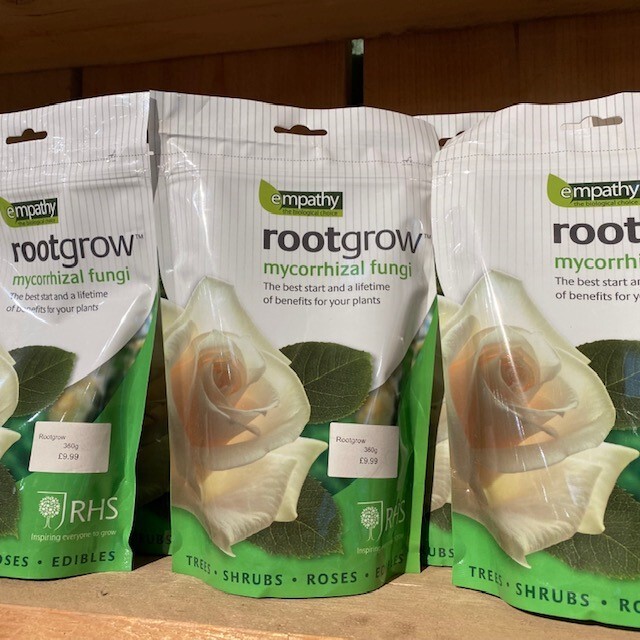
Watering:
Whilst it is unlikely that drought would kill an established rose bush, lack of water can severely damage a newly planted rose, and can lead to pest and disease issues such as mildew on older plants.
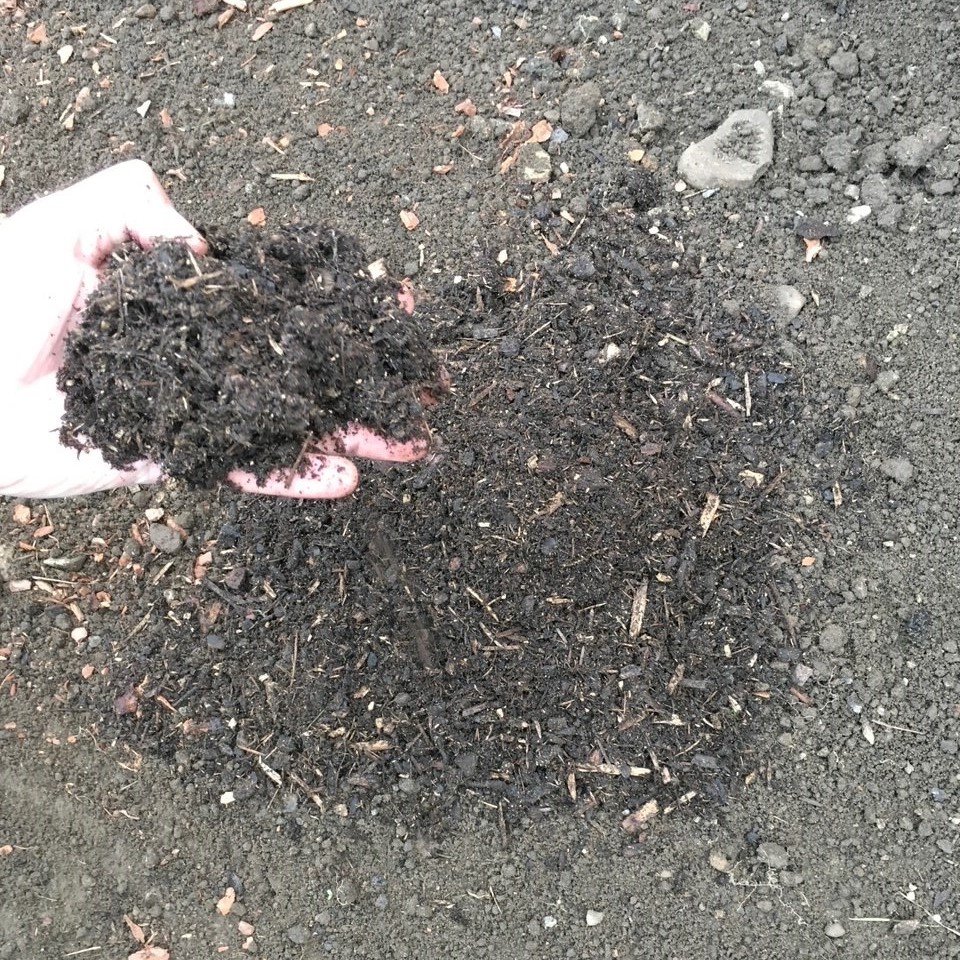
For newly planted roses, and established roses in dry soils, water thoroughly once a week during any dry periods – at least 5 litres per plant. Water slowly so the water does not ‘run off’, but can penetrate through the soil down to the roots. Mulching the area around the rose in late Spring, when the soil is damp from rainfall, is an effective way of conserving moisture. Use a 5cm layer of organic material such as Strulch or composted bark, which seals in water and helps prevent loss through evaporation.

